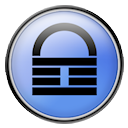CWL Best: Keepass Fixes The Password Problem
What really makes Keepass necessary is that we’re all surrounded by the need to use passwords. We have passwords for our bank accounts, passwords at work, passwords to play games, passwords to gain access to passwords. Passwords are a necessary evil in the attempt to keep secure in a highly connected world. Truth is, passwords aren’t going anywhere – and if you’re still using ‘123456’ or ‘password123’ as your password; expect it to be surprised sooner or later. The solution is to use a tool to store all this in a small database and keep it encrypted.
Yes, there are other password managers. There is the great 1Password, LastPass (recently sold to Logmein), and a great many applications that include password storage facilities in them. While it is considered a weak means of protection by storing passwords with a single master password – and even weaker to trust a browser to store a password; we all must attempt to balance the need to be secure with a higher level of security (imagine remembering 50 ten character passwords that looked like: ht4FrE#$-P). Keepass is the best way to balance both of these competing requirements. It also doesn’t hurt that Keepass is free and Open Source.
Here’s what Keepass does:
1. Use a keyfile instead of a master password – One of the most dangerous attacks that can befall your computer is the key logger. The keylogger will track all of the keys you press on your computer’s keyboard looking for stuff of value including credit cards and passwords. One way around the problem of having to type a master password is to use a key file that you keep safe on a USB storage device or somewhere else handy.
2. Damn good encryption – Advanced Encryption Standard 256 (AES-256) is a well-known standard for encrypting data.
3. A password generator – This type of tool is all over the place on the web and in downloadable apps, so it’s nice to have this in the application.
4. Performing auto-type (only in Windows) – Tools like RoboForm have classically done the job of taking a username and password and automatically logging into a website for you. The thing is, some sites you’ll want to do that, some not. Keepass is great because you use it when you want.
5. Available on most platforms – You can find implementations of Keepass for Android, Blackberry, iPhone/iPad, and just about any platform. The beauty of this is that (if you can keep your database in sync), all of the passwords can be close at hand no matter what device you use. Finding a full-featured version is a challenge on OS X, but there are a number of great tools out there.
Given the need to have simple passwords is often a product of either laziness or the clear inability to remember that many items – Keepass may help you keep track of more complex passwords (and given solid practices) keep your information more secure while centralizing it. I should too, if you utilize a cloud-based tool like Dropbox to synchronize your Keepass database, you can ensure the database is current on any device.
In a technology world full of complex tools, Keepass excels by keeping it relatively simple.


